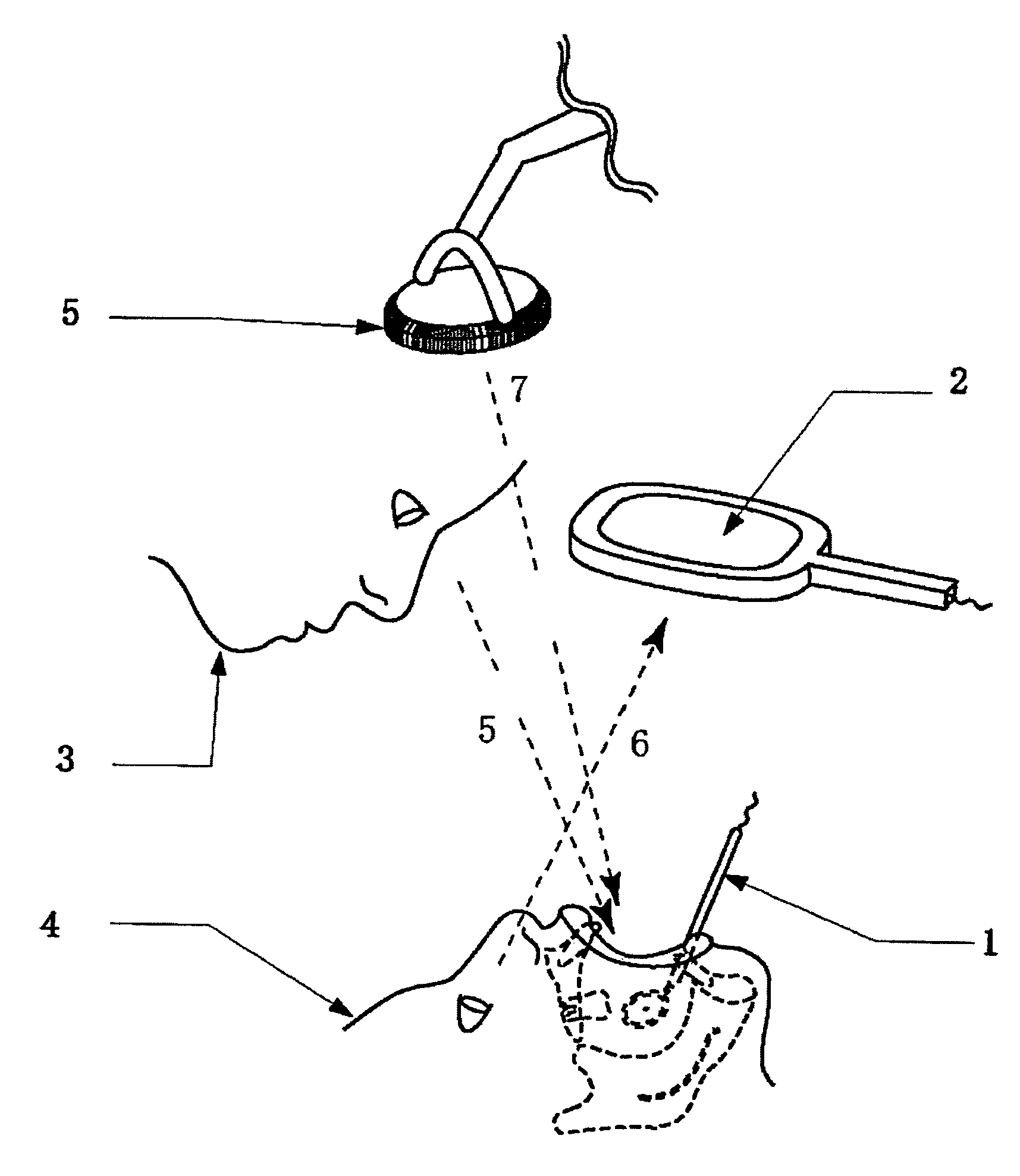Dental mirror, and an intraoral camera system using the same
a camera system and mirror technology, applied in the field of dental mirrors and intraoral camera systems, can solve the problems of mirror or the surface of the camera lens fogging up, the dentist has no way of knowing that the patient is accurately viewing the target projected by the hand mirror, and the situation is worse, so as to enhance the field of view
- Summary
- Abstract
- Description
- Claims
- Application Information
AI Technical Summary
Benefits of technology
Problems solved by technology
Method used
Image
Examples
Embodiment Construction
[0026]Several examples of the present invention are described herein by incorporating the drawings. FIG. 2 is a working example of the present invention in which the same reference symbols designate the same component. In the example illustrated in FIG. 2, a CCD camera rotation unit 12 is attached to a point inside rear mirror head cover 13 attached to reflector 10 of the dental mirror and a light transmitting aperture 11 is formed in the center of reflector 10, which is the lens thereof, to capture the image of an object in front of the dental mirror. This image is converted to image data by the CCD camera board with a battery 14 provided inside body handle 17 and connected to CCD camera board connection cable 15 in shank 16 and transmitted by transmitter 19 through transmission antenna 20 via CCD camera board and transmitter connecting cable 18.
[0027]In the CCD camera 48, as illustrated in FIG. 8, a gyro sensor is attached to a point in body handle 17 and controller 40 together dr...
PUM
 Login to View More
Login to View More Abstract
Description
Claims
Application Information
 Login to View More
Login to View More - R&D
- Intellectual Property
- Life Sciences
- Materials
- Tech Scout
- Unparalleled Data Quality
- Higher Quality Content
- 60% Fewer Hallucinations
Browse by: Latest US Patents, China's latest patents, Technical Efficacy Thesaurus, Application Domain, Technology Topic, Popular Technical Reports.
© 2025 PatSnap. All rights reserved.Legal|Privacy policy|Modern Slavery Act Transparency Statement|Sitemap|About US| Contact US: help@patsnap.com



